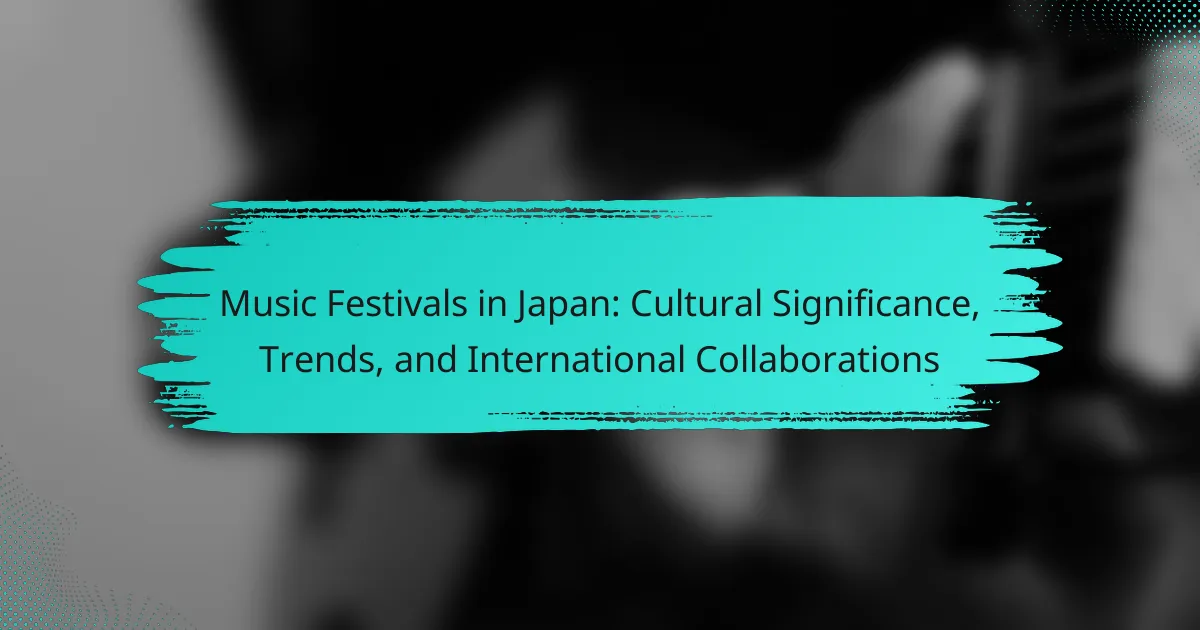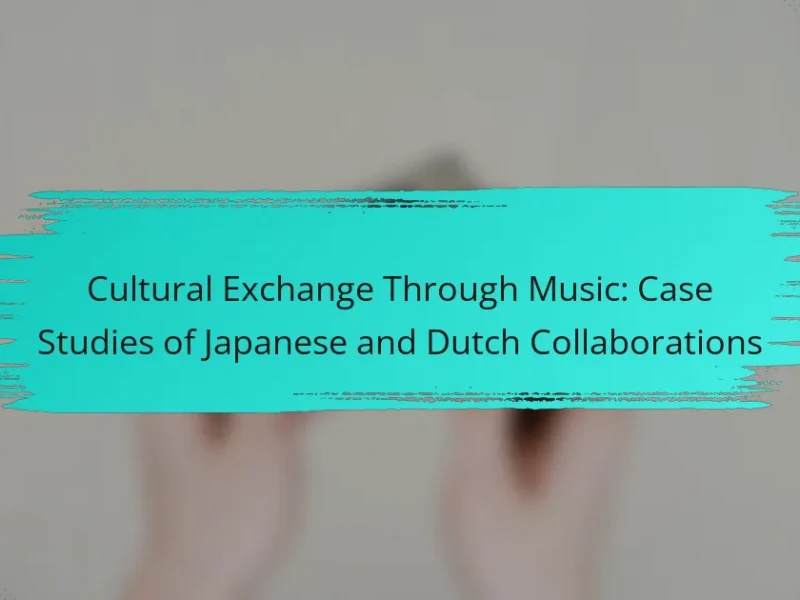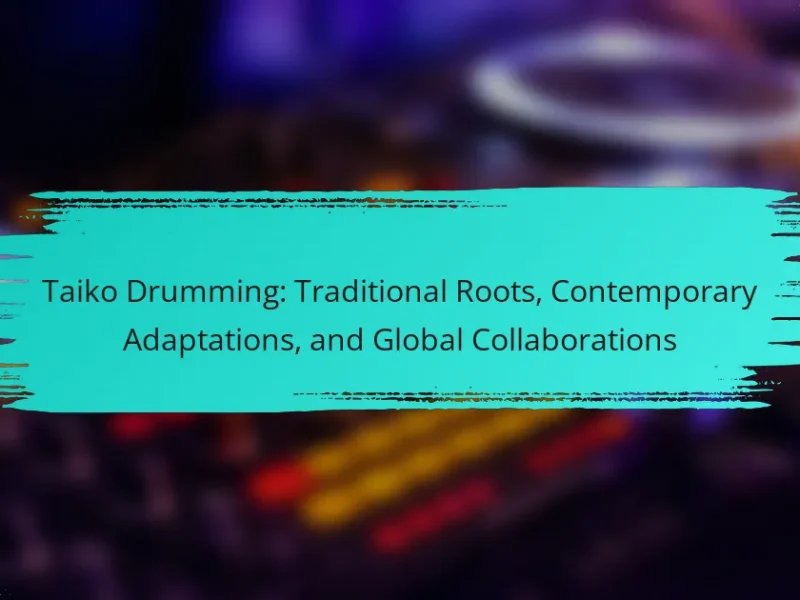Music festivals in Japan play a crucial role in cultural expression and community bonding. They blend traditional rituals with modern music trends, showcasing events like Gion Matsuri and Fuji Rock. Recent developments highlight increased international collaborations and sustainability efforts. These festivals significantly impact local economies while enhancing cultural exchange and artistic diversity.
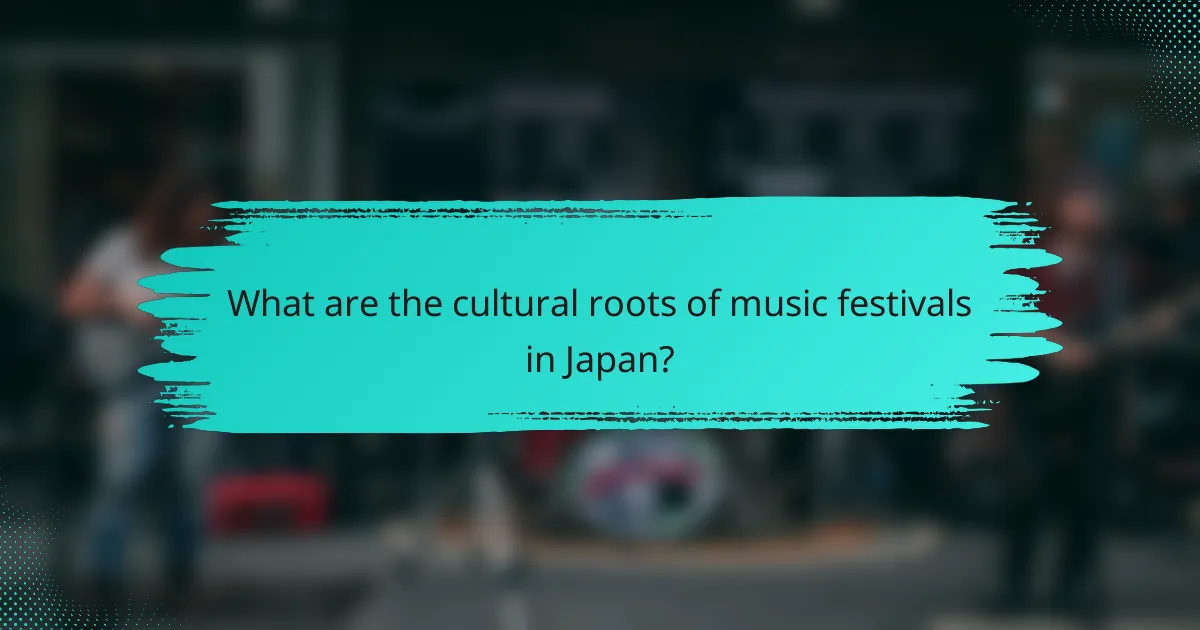
What are the cultural roots of music festivals in Japan?
Music festivals in Japan have deep cultural roots that reflect the country’s rich traditions and modern influences. These festivals often blend ancient rituals, seasonal celebrations, and contemporary music trends. For instance, the Gion Matsuri in Kyoto showcases traditional Japanese music alongside modern interpretations, illustrating this cultural fusion.
Moreover, festivals like Fuji Rock and Summer Sonic highlight Japan’s engagement with international music scenes, fostering collaborations with global artists. This trend signifies Japan’s unique position in the global music festival landscape, where tradition meets innovation.
The unique attribute of Japanese music festivals is their ability to maintain local cultural significance while embracing global influences. Festivals often serve as a platform for community bonding and cultural exchange, reinforcing their importance in Japanese society.
In summary, the cultural roots of music festivals in Japan are deeply intertwined with historical traditions and contemporary trends, creating a vibrant and dynamic celebration of music.
How do traditional Japanese music influences shape festival experiences?
Traditional Japanese music profoundly influences festival experiences by enhancing cultural identity and community engagement. The incorporation of instruments like the shamisen and taiko drums creates an immersive atmosphere that connects attendees to Japan’s rich heritage. Festivals often feature performances that reflect historical narratives, fostering a sense of continuity and belonging. Additionally, the rhythmic patterns and melodies evoke emotional responses, making the experience memorable. As a result, traditional music serves not only as entertainment but as a vital component of cultural preservation and expression during festivals.
Which regional variations exist in music festival themes and performances?
Music festivals in Japan showcase diverse themes and performances influenced by regional culture. Key variations include traditional festivals like Gion Matsuri in Kyoto, emphasizing local customs, and contemporary events like Fuji Rock Festival, which focus on global music trends. Additionally, festivals in Okinawa highlight unique indigenous music styles, while urban centers like Tokyo feature eclectic international collaborations. Each region’s cultural significance shapes its festival identity, reflecting a blend of heritage and modern influences.
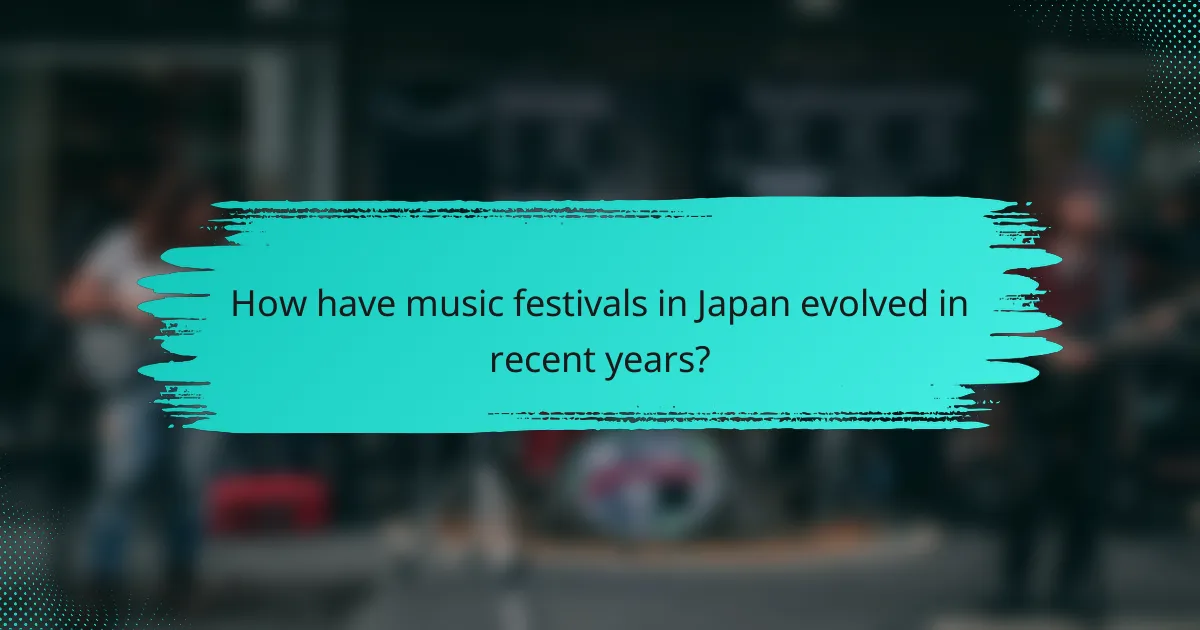
How have music festivals in Japan evolved in recent years?
Music festivals in Japan have significantly evolved, reflecting cultural shifts and global influences. Recent years have seen an increase in diverse genres, with more international artists participating. Festivals like Fuji Rock and Summer Sonic have embraced sustainability, integrating eco-friendly practices. Additionally, the rise of online streaming has expanded access, allowing global audiences to experience these events. This evolution highlights Japan’s growing role in the global music scene and its commitment to cultural exchange.
What trends are emerging in festival lineups and genres?
Emerging trends in festival lineups in Japan include a rise in genre diversity, with electronic, indie, and traditional Japanese music gaining popularity. Collaborations between international and local artists are increasingly common, enhancing cultural exchange. Festivals are also focusing on sustainability, integrating eco-friendly practices into their operations. Additionally, the inclusion of wellness activities and experiential art installations is becoming a staple, enriching the overall festival experience.
How has technology impacted the organization and experience of music festivals?
Technology has significantly enhanced the organization and experience of music festivals in Japan. Innovations such as mobile apps streamline ticketing and scheduling, improving attendee engagement. Live streaming allows global audiences to participate, expanding reach and cultural exchange. Additionally, social media platforms facilitate real-time updates and community interaction, creating a more immersive festival atmosphere. Enhanced sound and lighting technologies elevate performances, making them more memorable. These advancements reflect a unique blend of tradition and modernity, showcasing Japan’s cultural significance in the global music festival landscape.
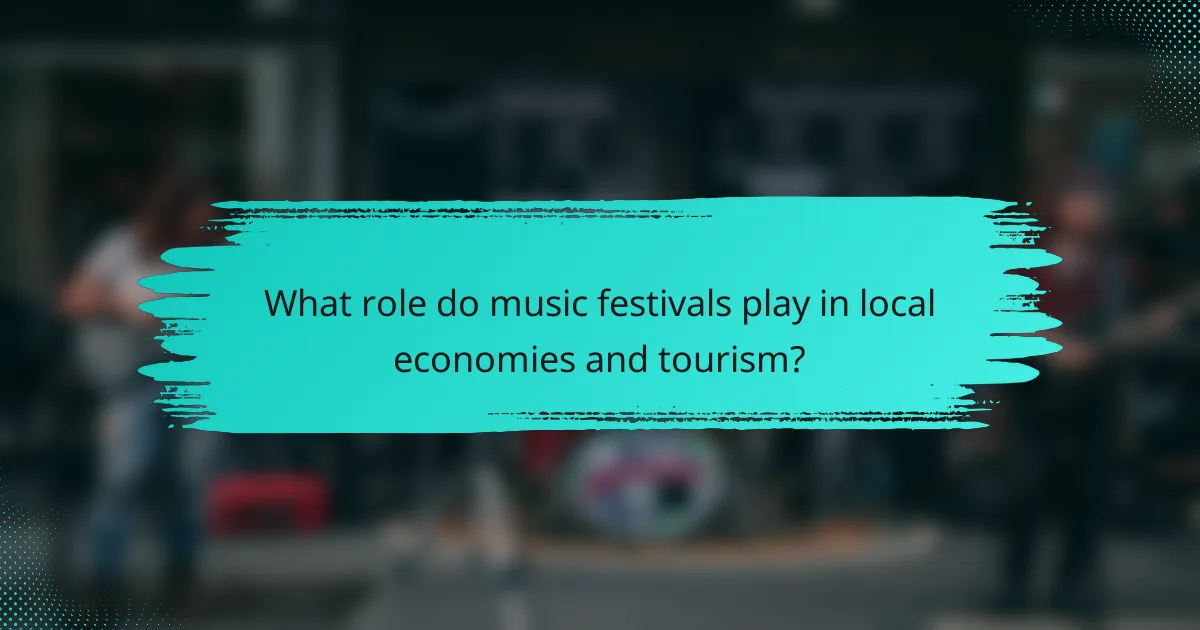
What role do music festivals play in local economies and tourism?
Music festivals significantly boost local economies and tourism in Japan. They attract visitors, create jobs, and stimulate spending in various sectors. For instance, the Fuji Rock Festival generates approximately 10 billion yen in economic impact annually. Festivals enhance cultural exchange, drawing international attendees and promoting local traditions. This influx supports hospitality, retail, and transportation industries, fostering sustainable growth in host communities.
How do festivals contribute to community engagement and cultural exchange?
Music festivals in Japan enhance community engagement and cultural exchange by fostering connections among diverse groups. These events showcase traditional and contemporary music, encouraging collaboration between local and international artists. As a result, they promote cultural understanding and appreciation through shared experiences. Festivals often feature workshops and interactive sessions, allowing attendees to participate actively and learn about different cultures. This immersive environment strengthens community bonds and supports the preservation of cultural heritage.
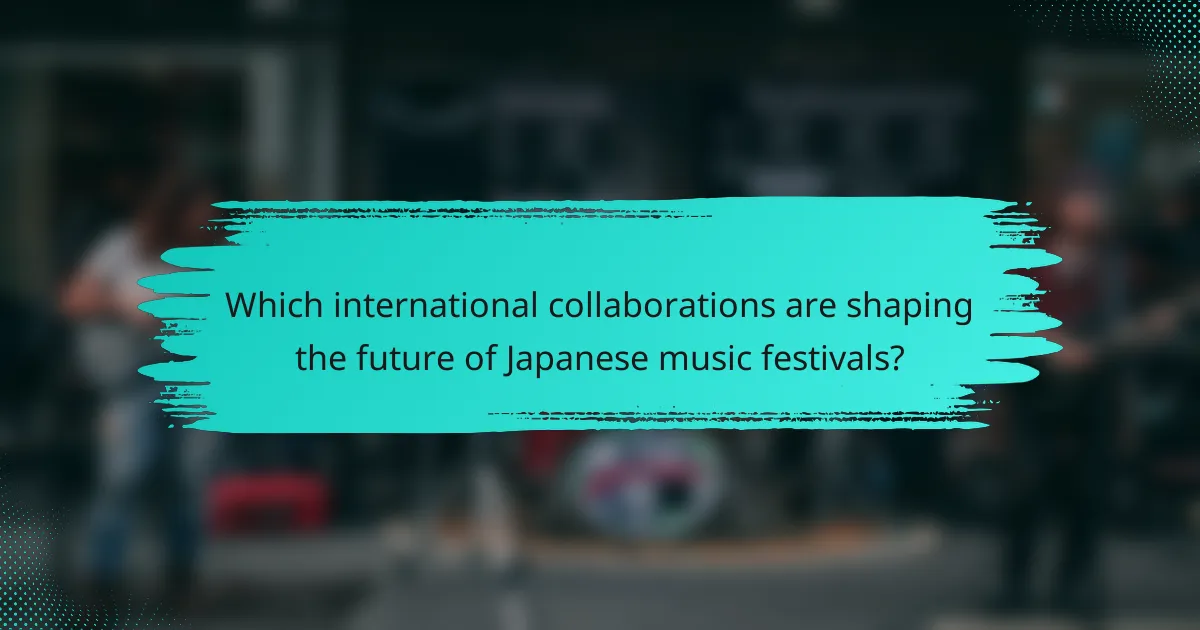
Which international collaborations are shaping the future of Japanese music festivals?
International collaborations are significantly influencing the evolution of Japanese music festivals. These partnerships enhance cultural exchange and diversify musical offerings. Notable examples include the annual Summer Sonic Festival, which features international artists alongside Japanese performers, fostering a blend of genres. Additionally, collaborations with global music platforms like Spotify have expanded festival reach, attracting international audiences. These trends reflect a growing openness in Japan’s music scene, emphasizing cross-cultural connections and shared experiences.
How do partnerships with global artists enhance festival offerings?
Partnerships with global artists significantly enhance festival offerings by introducing diverse musical styles and cultural experiences. These collaborations attract larger audiences and foster cross-cultural exchange. For instance, festivals like Fuji Rock and Summer Sonic feature international acts, enriching Japan’s music scene. This unique blend of local and global talent creates memorable experiences, driving tourism and cultural appreciation.
What are the challenges and benefits of cross-cultural collaborations in music festivals?
Cross-cultural collaborations in music festivals present both challenges and benefits. Challenges include language barriers and differing cultural expectations, which can hinder communication. Benefits encompass the exchange of diverse musical styles and ideas, fostering creativity and innovation. Additionally, these collaborations can enhance audience engagement by offering unique experiences that reflect a blend of cultures.
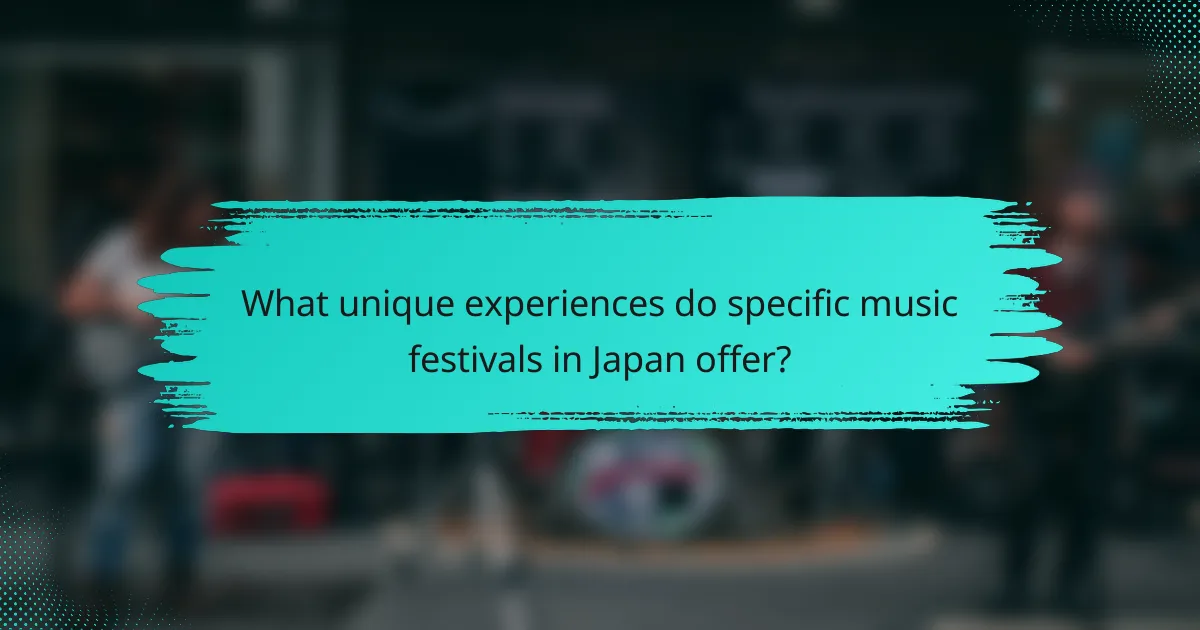
What unique experiences do specific music festivals in Japan offer?
Japan’s music festivals offer unique experiences through cultural immersion, artistic diversity, and international collaboration.
The Fuji Rock Festival, held in a lush mountain setting, showcases global acts alongside Japanese artists, emphasizing environmental sustainability. The Summer Sonic Festival blends rock, pop, and electronic genres, attracting international audiences and fostering cross-cultural connections.
In addition, the Aomori Nebuta Festival combines music with traditional dance and illuminated floats, creating a vibrant celebration of local culture. The Tokyo Jazz Festival features renowned jazz musicians, promoting artistic exchange and innovation.
These festivals not only highlight Japan’s rich musical landscape but also serve as platforms for international collaboration and cultural exchange.
How do festivals like Fuji Rock and Summer Sonic stand out in the global scene?
Festivals like Fuji Rock and Summer Sonic stand out globally due to their unique blend of cultural significance, diverse lineups, and commitment to sustainability. Fuji Rock is renowned for its stunning natural setting and focus on eco-friendly practices. Summer Sonic features a mix of international and Japanese artists, showcasing trends in music. Both festivals foster international collaborations, attracting attendees from around the world and enhancing Japan’s cultural footprint in the global music scene. Their distinct attributes, such as Fuji Rock’s mountainous backdrop and Summer Sonic’s urban vibe, create memorable experiences that resonate with festival-goers.
What rare cultural performances can attendees expect at niche festivals?
Attendees at niche music festivals in Japan can expect rare cultural performances such as traditional Noh theater, unique folk dances like Bon Odori, and live demonstrations of ancient musical instruments. These performances highlight Japan’s rich cultural heritage and often feature collaborations with international artists. Festivals like the Gion Matsuri showcase these rare performances, attracting both local and global audiences. The fusion of traditional and contemporary elements creates a distinctive experience that celebrates Japan’s cultural significance.
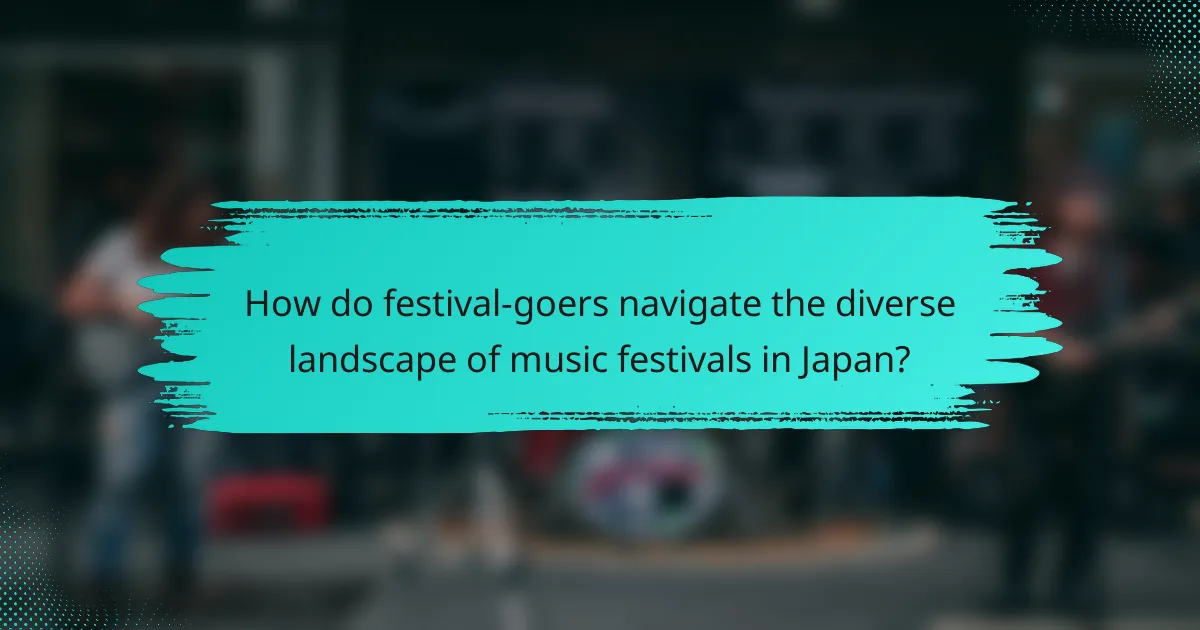
How do festival-goers navigate the diverse landscape of music festivals in Japan?
Festival-goers navigate the diverse landscape of music festivals in Japan by embracing a blend of cultural experiences and modern trends. They explore various genres, from traditional Japanese music to international acts, reflecting the country’s rich cultural tapestry. Festivals like Fuji Rock and Summer Sonic attract global audiences, showcasing international collaborations that enhance the music scene. Attendees often rely on social media for real-time updates, helping them discover lineups, set times, and venue specifics. Additionally, local cuisine and art installations add to the immersive experience, making each festival unique and memorable.
What tips can enhance the festival experience for both locals and tourists?
To enhance the festival experience for both locals and tourists, consider these tips:
1. Embrace local culture through traditional performances and food stalls.
2. Offer guided tours showcasing the festival’s history and significance.
3. Implement eco-friendly practices to promote sustainability.
4. Create interactive workshops for attendees to engage in local arts and crafts.
5. Facilitate networking opportunities for artists and attendees to foster collaborations.
Which common mistakes should attendees avoid when planning their festival visit?
Attendees should avoid common mistakes to enhance their festival experience. First, neglecting to research festival schedules can lead to missing key performances. Second, underestimating travel time may cause delays, resulting in missed events. Third, failing to stay hydrated and nourished can diminish enjoyment. Lastly, not planning for weather changes can lead to discomfort during the event.
